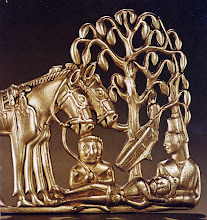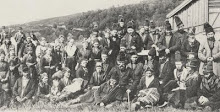Nomadic Mongolian lifestyle fades but yurts, shepherds on motorcycles, remain
By Sisi Tang (CP)
CHIFENG, China — It's no longer about the armed warriors, Genghis Khan and the robed nomads prancing through lush greenery on horseback.
In China's barely populated Inner Mongolian grasslands, what had defined Mongolian culture for outsiders have long been swapped for leather outfits, motorbikes, cellphones and tourism.
Five hours outside Inner Mongolia's southeastern city of Chifeng and deep in the grasslands, I chanced upon a local couple riding a mule-pulled cart on a quiet road, heading toward their coal-heated yurt. The old woman said she loves watching drama shows on TV, gesturing toward the dish propped up against her roof. On the freeway nearby, cars and buses seem to be the only other form of transportation, with horse-riding existing mostly for tourists.
The old storybook nomad life has dwindled, with most nomads now farming, living in compact brick huts, tending to tourists, or working in nearby cities. Desertification, too, is real and apparent, as you drive past yellowing grass where little livestock roams and sparse green shoots struggling through dried, gritty earth. The few who have maintained a nomadic lifestyle only camp on the grass during the wetter June to September months, making those the best times for travellers seeking an authentic glimpse of the old ways.
But while nomadic pastoral life is fading, echoes of it can still be found in some of the grasslands in southeastern Inner Mongolia. Windmills and nodding sunflowers dot endless expanses of rolling green fields, and there isn't a clearer blue sky to be found in all of China — although the view is occasionally interrupted by power lines or neon-yellow tour buses that honk relentlessly to prod the cows and sheep to the side.
Read the rest of the article here
Monday, September 27, 2010
Subscribe to:
Comments (Atom)




